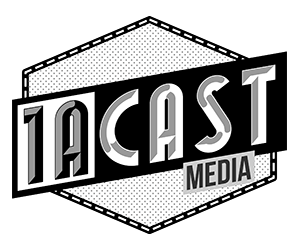 The Administration’s long anticipated White Paper on the reform of Fannie Mae and Freddie Mac was released recently (see it here).
The Administration’s long anticipated White Paper on the reform of Fannie Mae and Freddie Mac was released recently (see it here).It post dates the current Presidents taking office by nearly two years, $160 Billion in taxpayer support for the two entities and the renowned Wall Street Reform and Consumer Protection Act. Meanwhile, Fannie Mae, Freddie Mac, and the FHA now account for over 90% of housing mortgage market.
Despite the release of the White Paper, uncertainty still engulfs the real estate financing markets with no resolution of the final structure for replacing the former GSE’s, nor any certainty over the time frame for reform. Geithner affirmed the uncertainty stating,
 “And that’s a process that has to happen gradually, because they are now the dominant source of housing finance, and we want to be careful that that process happen in a way that doesn’t interfere with, or impede, the process of repair in the housing market. (here)“
“And that’s a process that has to happen gradually, because they are now the dominant source of housing finance, and we want to be careful that that process happen in a way that doesn’t interfere with, or impede, the process of repair in the housing market. (here)“
Underscoring this uncertainty, the Mortgage Bankers Association forecasts that only $1 Trillion in residential mortgages will be originated this year down from nearly $2.4 Trillion in 2007 (here).
Several changes will characterize the future financing markets and institutions based on the Congressional hearings to date and the long awaited Administration proposal. Structural changes in the industry will include the privatization of Fannie and Freddie and/or the formation of new mortgage intermediaries replacing the former GSE’s, the winding down of Freddie and Fannie ‘s existing mortgage portfolios, reduction of their securitized mortgage guarantees, and the limitation or elimination of the Federal Government’s future role in housing capital markets. Private capital in the markets will not only increase through greater involvement of private firms, but also through increased equity participation by borrowers through greater down payments, increasing involvement of private mortgage insurance and risk retention by the original mortgage broker, banker or lender. The pricing of government guarantees where applicable will increase dramatically.
These steps are being taken since Washington DC has finally acknowledged that as the WSJ writes, “Starting with the savings and loans crisis in the late 1980s, and continuing through Fannie and Freddie and the Federal Housing Administration (FHA), taxpayers have been or will be called upon to pony up more than $500 billion to pay for losses that the government has suffered in an unsuccessful effort to help people buy homes. The reason is simple: The government never receives adequate compensation for the risks it assumes.”(here).
The Administration has proposed three alternatives (here) with the government’s role ranging from providing limited guarantees through the FHA, VA and Farm mortgages to a governments role as a lender of last resort during time of crisis and guarantor of securitized mortgages. The guarantees under this later scenario are more limited and costly than those of today, with private insurers being the primary insurer and government being the insurer of last resort.
Option 1 Privatized system of housing finance with government guarantees limited to FHA, VA and USDA loans.
Option 2 Privatized system with government guarantees limited to FHA, VA and USDA loans and government intervention only during economic crises.
Option 3 Privatized system with government guarantees of FHA, VA , USDA loans, government crisis intervention, and subordinate federal guarantees of mortgage securities behind primary private insurers.
Private insurers would be subject to “stringent” capital and regulatory oversight under proposal three.
While the Administration’s White Paper begins the process, a process which will hopefully re-inject private risk capital into the mortgage markets, its release has done little to resolve uncertainty nor the fate of some $5 Trillion in mortgages originated and guaranteed by Fannie and Freddie. It also does little to clarify the time frame over which the reform will occur although reliable estimates suggest a minimum of 5 – 10 years.
“The problem with Fan and Fred from the beginning was not—despite the Administration’s claims—that the profit motive corrupted their benign goals. Rather, the political influence and financial power of the housing lobby ensured that the companies operated outside the normal rules of politics and financial discipline. Thanks to an implicit government guarantee, the market never put any limit on their growth, even as their liabilities climbed into the trillions.” (here)
The government subsidy of residential mortgages finance has provided decades of guarantees on mortgages allegedly offset by explicit up front fees charged for those guarantees. However, the government has continuously mis-priced the premium, under charging for the ultimate risk of default. With the 2007 catastrophic housing capital market failure, the real level of risk has emerged and the taxpayer is and will continue to pay this deferred yet real cost of decades of guarantees. Additionally the taxpayer’s cost includes not only of the explicit cost and bail out of Fannie Mae and Freddie Mac, but the massive subsidies for HAMP/Hope Now and other direct homeowner government subsidies. These costs are direct, explicit and measurable; however, the ultimate costs of government housing programs is likely borne by the loss in economic growth over the next decade which economists estimate is likely to be 2 – 4% of GDP annually. (Here.)
And furthermore according to Wallison, other necessary changes have not been forthcoming from the Administration inclusive of requirements of greater home buyer down payment (more than 10% down), loan terms of less than 30 years and the eventual total removal of government guarantees. (here)
Yet despite the massive cost the Administration has delayed reform given its own indecision and the lobbying efforts of powerful organizations like National Association of Realtors, American Bankers Association, Mortgage Bankers Association and the consortium of lobbying interests in The National Low Income Housing Coalition. “The power of the housing lobby is implicit even in the Treasury’s refusal to pick a preferred reform. As with entitlement reform, the Administration is leaving the hard work to House Republicans, who will bear the brunt of the political blowback.” (Here)
Despite the Administration’s admission on CNBC that Fannie Mae and Freddie Mac are “dead,” it took the Administration over two years to figure this out. And why didn’t they propose this reform in the Dodd Frank Reform Bill? The Administration’s proposal basically gives lip service to replacing the former GSE’s with private firms and limiting governments role to lower income housing, but basically punts the decision to Congress. Yet again this indecisiveness allows the President to take credit, chime in later, criticize, while avoiding any blame just as he did during the legislative process involving Health Care and Financial Reform legislation!
Tell ’em where you saw it. Http://www.victoriataft.com
 The Administration’s long anticipated White Paper on the reform of Fannie Mae and Freddie Mac was released recently (see it here).
The Administration’s long anticipated White Paper on the reform of Fannie Mae and Freddie Mac was released recently (see it here).“And that’s a process that has to happen gradually, because they are now the dominant source of housing finance, and we want to be careful that that process happen in a way that doesn’t interfere with, or impede, the process of repair in the housing market. (here)“



